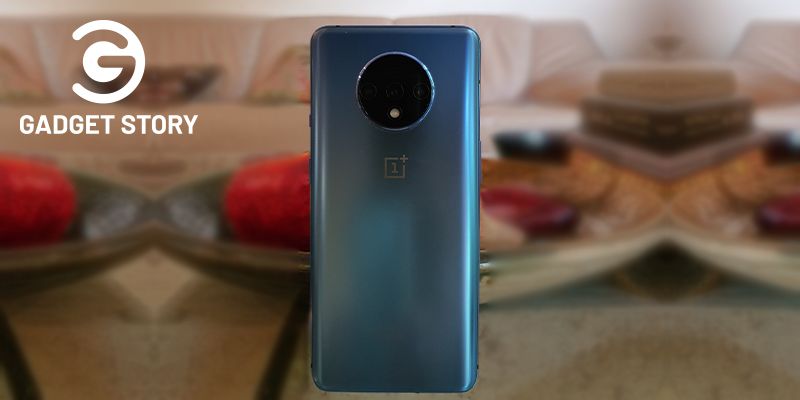OnePlus 7T is the best value-for-money Android flagship of 2019
The OnePlus 7T sports an irresistible price tag for a flagship device. Barring an ordinary camera setup, this might be the best Android all-rounder out there.
One might be forgiven for not being able to keep up with OnePlus launches this year. In May, the Chinese manufacturer came out with the OnePlus 7 and the OnePlus 7 Pro smartphones, venturing into the high-end flagship territory for the first time.
While the OnePlus 7 continued its trend of ‘affordable flagships’, the OnePlus 7 Pro was aimed squarely at Samsung’s ‘S’ series and the iPhone range of smartphones.
Come September 2019, the company released the OnePlus 7T, marrying the best of the OnePlus 7 Pro with the affordability of the OnePlus 7. The OP7T had enough substance and upgrades to warrant a release within just a few months of the OP7.
On paper, it seems that OnePlus is back to its best with the OP7T. But, let’s take a deep dive and find out if that’s the case.

The specs
The OP7T has a 6.55-inch AMOLED display with a 2400x1080 resolution and a 20:9 aspect ratio. You get a 90Hz refresh rate with HDR10+ support. Under the hood are Snapdragon’s 855 Plus processor, a 3,800 mAh battery and 8GB of RAM along with 128GB of storage.
There’s a triple camera setup: a 48-megapixel primary sensor, a 16-megapixel ultra-wide-angle lens and a 12-megapixel telephoto lens (with 2X optical zoom).
The OP7T runs Oxygen OS 10 (based on Android 10) out of the box. There’s a USB Type-C port at the bottom, but there’s no headphone jack. The OP7T employs the company’s latest Warp Charge 30T, and the device weighs 190 grams.
Sleek design and a gorgeous display
The OP7T gets the OP7 Pro’s most important feature, which is the smooth 90Hz refresh rate. This may not seem much on paper, but after using a few smartphones with the same feature, there’s no going back. The fluidity of the display and the refresh rate make the smartphone experience a lot better on a day-to-day basis.
The 90Hz refresh rate along with a vibrant AMOLED panel is a win-win for consumers and one hopes that the other manufacturers will follow suit.
The OP7T looks very similar to the OP7 Pro, just a little less premium. It has no curved display, but one wouldn’t really miss that. There’s a teardrop notch at the top of the OP7T, which some may dislike, as opposed to the OP7 Pro’s pop-up selfie camera. On the back, the triple-camera setup is encased in a large circle that slightly protrudes, instantly taking you back to the Motorola smartphones of the past.
While it may not be as premium as some of the other smartphones out there, it has a solid build with a good grip and great viewing angles.
The pros: battery performance and software
OnePlus has always been good at getting the best performance out of its smartphones, an all-day-long battery life, and software tweaks that bring in repeat customers. It is no different with the OP7T. OnePlus is also one of the first manufacturers to offer Android 10 (the latest OS) out of the box.
At the time of the launch, the OP7T came with an absolutely buggy version of Oxygen OS 10 (OnePlus’ Android fork based on Android 10). A number of apps wouldn’t even open, and the smartphone would randomly restart and lag across the board.
Fortunately, OnePlus came out with a quick OTA software update that fixed these bugs. Now, the software feels fluid, and performance is blazingly fast.
The Oxygen OS is a light tweak of Android 10. One welcome change is that it makes Google’s Android 10 gesture system available. It improves upon OnePlus’ poor back button by allowing users to swipe from either of the edges. The performance is marginally faster than that of the OP7 Pro and you wouldn’t really notice the changes unless both phones are placed next to each other.
The in-display fingerprint scanner is also marginally faster than that on the OP7 Pro.
Despite being a smaller device, the battery on OP7T is good, and comfortably lasts more than a day with over five hours of screen-on-time (SOT).
And when it comes to charging, OnePlus’ Warp Charge technology is quite a treat. Warp Charge 30T, which is an updated version of Warp Charge 30 that debuted last fall, has been rolled out with the OP7T. A fully drained smartphone went up to 35 percent charge in about 15 minutes, and almost 70 percent in just half an hour.
The triple-camera setup is a mixed bag
If you’re an Instagram millennial, then the OP7T will do a competent job for you. But, if you were to compare the OP7T’s camera setup with that of the Galaxy S 10/Note 10, Pixel 3/3a, iPhone 11/11 Pro, and some other flagship devices, it ranks fairly below competition.
Since the days of the OP3, OnePlus has produced fantastic smartphones, but with one missing USP: a great camera. That holds true in 2019 too.

The Nightscape - OnePlus' night mode is a disappointment.
On the OP7T, a lot of the outdoor photos came out with less sharpness, and it lacked details. White balance wasn’t proper either. The Nightscape (OnePlus’ night mode) is a disappointment. It kept producing yellower images or darker images than expected. The Pixel’s Night Sight, and even Huawei and Samsung’s night modes easily trump OnePlus’ Nightscape.
One positive addition to the OP7T camera is the Super Macro mode. It uses the ultra-wide lens and gets close to a small subject. Essentially, the OP7T focuses on items that are as little as 2.5 cm away. This mode allows for imagery that is hard to see with the naked eye. It’s a really fun and useful mode and will be appreciated by many shooters.
Overall, the OP7T camera isn’t bad, and probably one of the better ones OnePlus has made. It will do a good job if you want to show off your daily life on social media; if you’re into serious photography, it may not be up to the mark.
Adaptive brightness isn’t all that great
The OnePlus 7T has been giving me a headache since the day I got hold of the review unit. The auto-brightness feature on the device might be an irritant. When it is toggled on, you get a darker than usual screen at times, and a super bright screen when it is totally unnecessary. This could be blinding.
If you look at OnePlus community forums or trawl through Reddit boards, you can see that this issue isn’t isolated. It’s widespread and OnePlus needs to push out a software update to fix it. But, unlike other manufacturers who send out monthly updates, OP updates are bi-monthly. So, users will have to wait.
Verdict: to buy or not to buy
The short answer is yes.
Despite the middling cameras, the OP7T is the best value-for-money flagship you can buy today. It’s priced at Rs 37,999 for the 8GB RAM and 128GB storage variant. The 256GB variant retails for Rs 39,999.
With the release of the OP7T, one can safely say that the OP7 Pro is dead. There is absolutely no reason to get the latter at a price of Rs 48,999 unless you want to use a pop-up selfie camera and curved edge display.
Of course, OP7T comes in a crowded segment that consists of Asus ROG Phone II, the Redmi K20 Pro, Google Pixel 3a, Oppo Reno 10x Zoom, and V17 Pro. But OnePlus has the advantage of a clean OS, a great display and battery life, and might just score over the others.
(Edited by Evelyn Ratnakumar)












